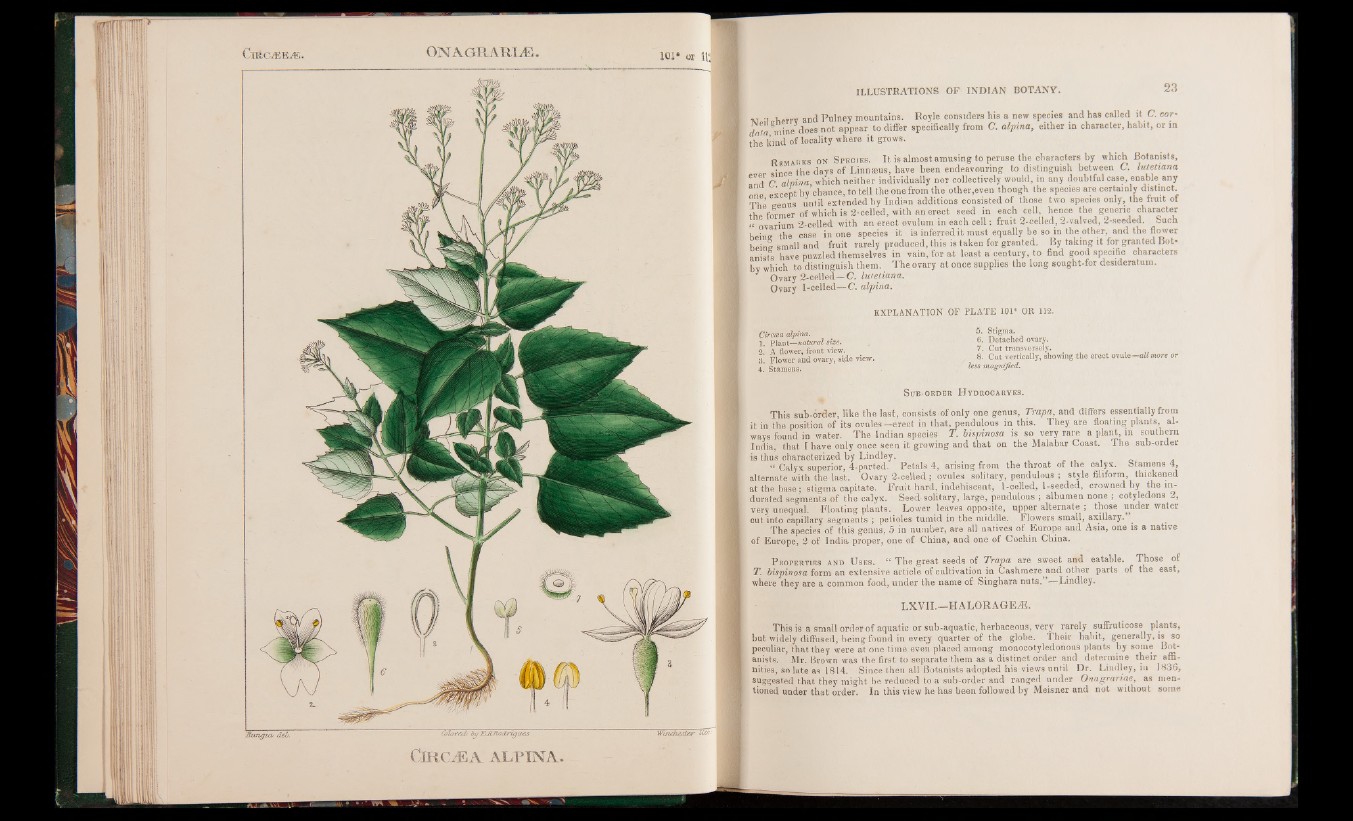
On ag r a u i æ
Circle a . alpina.
•V l W rv and Pulnev mountains. Royle considers his a new species and has called it C. cor-
d a ta min e does not appear to differ specifically from C. alpina, either in character, habit, or in
the kind of locality where it grows.
R emauks on S pec ies. I t is almost amusing to peruse the characters by which Botanists,
since the days of Linneeus, have been endeavouring to distinguish between C. lutetiana
H C alvina which neither individually nor collectively would, in any doubtful case, enable any
“ pvceut by chance, to tell the one from the other,even though the species are certainly distinct.
Thp ffenus until extended by Indian additions consisted of those two species only, the fruit of
the former of which is 2-celled, with an erect seed in each cell, hence the generic character
‘f ovarium 2-celled with an erect ovulum in each cell: fruit 2-celled, 2-valved, 2-seeded. Such
hpinff the case in one species it is inferred it must equally be so in the other, and the flower
beinl small and fruit rarely produced, this is taken for granted. By taking it for granted Botanists
have puzzled themselves in vain, for at least a century, to find good specific characters
by which to distinguish them. The ovary at once supplies the long sought-for desideratum.
y Ovary 2-celled—C. lutetiana.
Ovary 1-celled— C. alpina.
EXPLANATION
Circcea alpina.
1. Plant—natural size.
2. A flower, front view.
a. Flower and ovary, side view.
4. Stamens.
OF PLATE 101* OR 112.
5. Stigma.
6. Detached ovary.
7. Cut transversely.
8. Cut vertically, showing the erect ovule—all more or
less magnified.
S ub-order H ydrocaryes.
This sub-order, like the last, consists of only one genus, Trapa, and differs essentially from
it in the position of its ovules—erect in that, pendulous in this. They are floating plants, always
found in water. The Indian species T. bispinosa is so very rare a plant, in southern
India, that I have only once seen it growing and that on the Malabar Coast. The sub-order
is thus characterized by Lindley. .
“ Calyx superior, 4-parted. Petals 4, arising from the throat of the calyx, btamens 4,
alternate with the last. Ovary 2-celled ; ovules solitary, pendulous ; style filiform, thickened
at the base; stigma capitate. Fruit hard, indehiscent, l-celled, l-seeded, crowned by the indurated
segments of the calyx. Seed-solitary, large, pendulous ; albumen none ; cotyledons 2,
very unequal. Floating plants. Lower leaves opposite, upper alternate ; those under water
cut into capillary segments ; petioles tumid in the middle. Flowers small, axillary.”
The species of this genus, 5 in number, are all natives of Europe and Asia, one is a native
of Europe, 2 of India proper, one of China, and one of Cochin China.
P roperties a n d U ses. “ The great seeds of Trapa are sweet and eatable. Those of
T. bispinosa form an extensive article of cultivation in Cashmere and other parts of the east,
where they are a common food, under the name of Singhara nuts.”—Lindley.
LXVII.—HALORAGE^E.
This is a small order of aquatic or sub-aquatic, herbaceous, very rarely suffruticose plants,
but widely diffused, being found in everj quarter of the globe. Their habit, generally, is so
peculiar, that they were at one time even placed among monocotyledonous plants by some Botanists.
Mr. Brown was the first to separate them as a distinct order and determine their affinities,
so late as 1814. Since then all Botanists adopted his views until Dr. Lindley, in 1836,
suggested that they might be reduced to a sub-order and ranged under Onagrariae, as mentioned
under that order. In this view he has been followed by Meisner and not without some